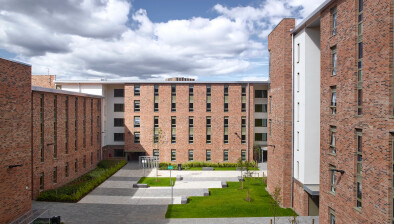Two projects worth £15m awarded for RAF Lossiemouth
 The Defence Infrastructure Organisation (DIO) has awarded contracts worth a combined £15 million for two new projects at RAF Lossiemouth to support the station’s Typhoon aircraft.
The Defence Infrastructure Organisation (DIO) has awarded contracts worth a combined £15 million for two new projects at RAF Lossiemouth to support the station’s Typhoon aircraft.
RAF Lossiemouth is an RAF fast jet main operating base and is home to squadrons operating both the Typhoon and Tornado jets. The station is also the Quick Reaction Alert (Interceptor) North base, meaning that it provides crews and jets to intercept unidentified aircraft in UK airspace.
The contract for an Installed Engine Test Facility, at a value of just over £9m, has been awarded to Henry Brothers. This building will house aircraft undergoing testing following the repair or replacement of an engine. The enclosed facility will be very specialised, featuring technology to keep the aircraft in place while the engine is running and an instant fire suppression system. It will also include soundproofing technology to reduce engine noise to a safe level and deaden sound waves which could otherwise damage the aircraft.
The second contract, to construct a Typhoon Propulsion Service Facility at an expected cost of around £6m, has been awarded to Balfour Beatty Regional Construction. The facility is a workshop and office space which will allow Rolls Royce engineers to rebuild, support and supply the EJ200 engines used by 3 Typhoon Squadron. The structure included a highly secure storage area for the engines in hermetically sealed weatherproof ‘engine pods’. This contract is expected to secure around 25 jobs at Balfour Beatty.
Jim Ellistone, DIO’s project manager for these works, said: “DIO is currently undertaking a considerable amount of work at RAF Lossiemouth to support the three Typhoon squadrons now stationed here. These two projects are completely new facilities and an important part of the overall Typhoon programme. The Installed Engine Test Facility and Typhoon Propulsion Service Facility will assist and support all three squadrons by ensuring the jet engines can be fully maintained, repaired, replaced, and checked safely on the ground. This will ensure that they are running optimally, efficiently and above all safely before taking to the air.”
Construction on both projects will begin shortly and they are expected to be complete by Autumn 2016.















